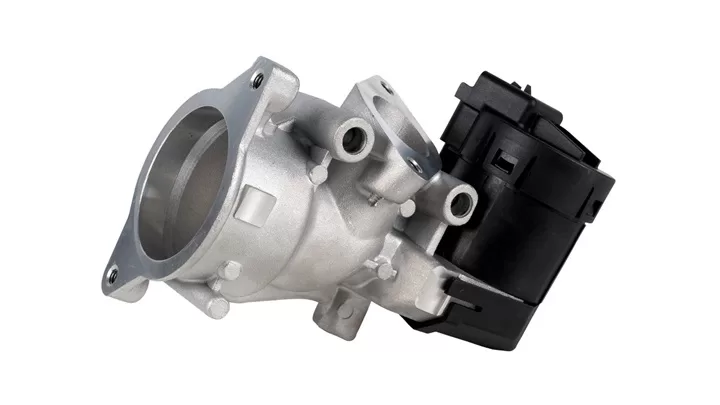Exhaust Gas Recirculation (EGR) Effect on Chip Tuning
Exhaust Gas Recirculation, or EGR for short, is a widely used emission control technology in internal combustion engines, aimed at reducing nitrogen oxide (NOx) emissions, improving fuel economy, preventing engine knocking, and enhancing overall engine performance.
Besides its environmental benefits, EGR plays a significant role in the world of vehicle engine tuning. This article explores the impact of EGR on chip tuning, highlighting the advantages, challenges, and the balance between performance and emissions.
Exhaust Gas Recirculation (EGR) in Tuning
In the combustion chamber, NOx is produced by high-temperature mixtures of atmospheric nitrogen and oxygen, especially at the cylinder’s peak pressure. A controlled amount of the engine’s exhaust gas, created during combustion, is routed, cooled, and fed back to the engine intake air system.
In this process, exhaust gas displaces air and reduces the amount of O₂ that enters the combustion chamber. By reducing the amount of oxygen, the amount of fuel that can be burned is reduced, leading to a reduction in peak combustion temperatures. Lower temperatures result in decreased NOx formation, a significant contributor to air pollution and smog.
In chip tuning, manipulating EGR systems can achieve a desired balance between performance, fuel economy, and emissions.
History of EGR systems
The first EGR systems were simple devices measuring the flow rate between the exhaust and intake tract when the engine was running, leading to difficult starting, reduced performance, and lost fuel efficiency, among other issues.
The next step was an EGR valve controlled by a manifold vacuum that opened or closed under certain conditions.
As automotive technology advanced, EGR valves were partially controlled by vacuum draw from the carburetor’s venturi, allowing more precise control of EGR flow in specific engine load conditions.
Backpressure transducers were later added to EGR valve control to further adjust EGR flow during engine load conditions. Today, NOx emission standards require advanced EGR systems that effectively reduce NOx.
Benefits of EGR in Tuning
- Enhanced Fuel Efficiency: A properly calibrated EGR system can reduce pumping losses and greatly improve fuel efficiency. The recirculated exhaust gases lower the amount of fresh air the engine needs to intake, leading to a more efficient combustion process.
- Knock Reduction: EGR helps in preventing engine knock by lowering combustion temperatures. Tuning this can allow for more aggressive ignition timing and significantly higher compression ratios, enhancing power output without the risk of knock-induced damage.
- Emissions Conformity: Tuning engines to meet stringent emission standards is a significant challenge. EGR plays a crucial role in reducing NOx emissions effectively. By adjusting EGR parameters, tuners can ensure engines comply with environmental regulations while maintaining performance.
Challenges of EGR in Tuning
- Soot and Particulate Matter Formation: While EGR reduces NOx emissions, it can increase the formation of soot and particulate matter, especially in diesel engines. Thus, additional filtration systems, like particulate filters (DPFs), must be meticulously managed during tuning to avoid clogging and performance issues.
- Maintenance and Complexity: EGR components are prone to clogging and wear, requiring regular maintenance. EGR systems are also complex and difficult to manage; precise control and monitoring are needed, complicating tuning efforts significantly.
- Performance Trade-offs: Although EGR can improve fuel efficiency and reduce emissions, it can also reduce an engine’s performance under certain circumstances. The dilution of the air-fuel mixture by EGR leads to reduced power output and throttle response. Tuners must work diligently to find the perfect balance between these factors to gain extra power without compromising emissions standards.
EGR Tuning Strategies
- EGR Control Adaptation: All new-generation engine control units (ECUs) are equipped with adaptive EGR systems that monitor real-time engine working conditions and adjust the EGR rate accordingly. Tuners can leverage this technology to alter EGR parameters to optimize performance and emissions.
- Removing EGR: In extreme tuning scenarios, such as motorsport racing, EGR deletion is one strategy. In these scenarios, EGR is either removed completely or disabled so the engine can reach maximum power output. This practice is not street legal in many countries and, since it can lead to higher NOx emissions, it is strictly prohibited for off-road or truck use.
- Cooling the EGR: High-end EGR systems have their own cooling systems that lower the temperature of recirculated exhaust gases. Tuners can fine-tune these EGR cooling systems further, making them more efficient, which leads to fewer NOx emissions and improved engine performance.
Conclusion on Exhaust Gas Recirculation (EGR) chiptuning
EGR systems today are combined with other engine systems like turbocharging and variable valve timing, among others. By interacting with these systems, tuners can maximize engine performance while remaining within emission limits.
Exhaust gas recirculation (EGR) is a crucial component of modern engines. As the automotive industry technology evolves, EGR’s role in tuning will remain essential. Its ability to reduce NOx emissions, improve fuel efficiency, and mitigate engine knock makes it an invaluable tool for tuners seeking a balance between performance and environmental compliance.
However, achieving this balance is not an easy task. The need for precise EGR control, professional chiptuning tools, and the expertise and experience required from a tuner make it a challenging task for professionals chiptuning file service providers.


